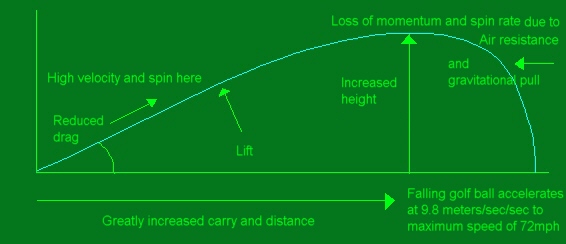Quote Fully="Fully"The angle from behind is flawed. It's not directly behind the posts. '"
But it is. You can clearly see this, as the far posts in the image are bang in the middle of the near posts. the camera is set up precisely level with the centre spot.
Quote Fully="Fully"By swerved, I don't mean it suddenly went drastically in the opposite direction. By swerved I mean it starts off at a certain speed to the right. If it was a straight line you would expect it to maintain that speed in movement (visually from the camera's perspective) from left to the right as it rises and falls. '"
No, you wouldn't. Unless the cameraman is completely in line with the ball's path. From the image I posted showing the ball as it approached the camera, you can see that he was almost exactly in line, but not quit, because it endes up a (short) distance to his right.
This means that the closer the ball gets to him, it will have an apparent motion from left to right (from his point of view) which will at first be almost unnoticeable until, if it gets level with him, it is exactly 90 degrees to his right. As I said before, if you drew a path of the ball as seen by the cameraman, it would for that reason be a narrow parabolic path. It would not be a straight up and down vertical path.
Quote Fully="Fully"Someone with science may be able to confirm that the speed of the ball forward has to be equal to the momentum of the ball being kicked to the right for a perfectly straight line on an angle (physics wasn't my strong point). '"
It's not your forte, but you're over-complicating it. What happens is that the ball goes up but at an ever decreasing rate, until eventually gravity wins and the ball starts to fall back to ground at an ever decreasing rate. Viewed from above, the ball would set off fast, and then decelerate at an even rate as it lost forward speed due to air resistance.
Viewed from the side, the combination of these effects is broadly like the image below. That is for a golf ball, and is not the same as for a rugby ball, because a golf ball generates lift and so continues to rise for longer, but in general terms it is the same sort of path. Similar is true for a bullet, a cricket ball or any unpowered ballistic object.

Quote Fully="Fully"As people have pointed out, it's hard to prove or disprove at which point the ball crosses the goal posts from those angles. '"
But it is harder to disprove the laws of physics, and if we know where the ball started off, and where it ended up, we can draw virtual lines, can't we. The question is not whether we can prove at what point in any image the ball passed the goal line, indeed that would still not tell us much if anything. The question is whether we can work out whether the ball's trajectory was inside or outside the posts. We can, and I did.